2006 Detroit Tigers: Where are they now?


The 2006 Detroit Tigers were one of the most successful teams in franchise history. Where are they now?
Detroit Tigers fans had to endure rough times in the late 1990’s and early 2000’s. By 2003 the futility had hit an all-time high. The Tigers went 43-119, the worst full-season mark ever.
However, just three short seasons later the Tigers had turned it around completely, winning 95 games and advancing to the World Series for the first time since 1984.
2006 was one of the most memorable seasons in team history, with a cast of All-Stars (and at least one Hall of Famer) in tow.
The team famously dismantled the Yankees in the ALDS before facing Oakland in the ALCS. A four-game sweep, punctuated by the most famous home run in team history, sent the Tigers to the World Series.
Of course, things didn’t go so well against the Cardinals. The bats went lifeless and the Tigers were only able to muster 11 runs in five games.
12 years is a long time in baseball history, and only five players who played for the 2006 Detroit Tigers are still in the major leagues.
Instead, our 2006 Tigers are now coaches, politicians, general managers, announcers, Hall of Famers and even financial advisors.
Here is a look at what happened to the boys in blue who spearheaded that magical season.
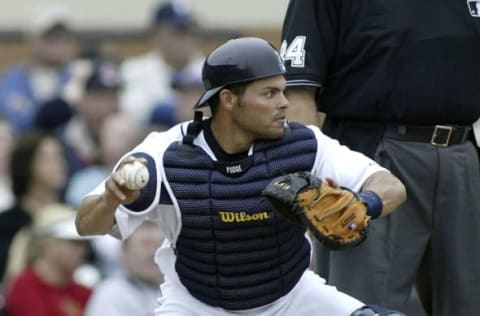
Ivan Rodriguez
‘Pudge’ as he was nicknamed, came to the Detroit Tigers as a free agent after the 2003 season. He endured himself to the Detroit faithful immediately, hitting .334 with 19 home runs in 2004. He was an All-Star, Gold Glove and Silver Slugger winner, and finished 10th in MVP voting.
Rodriguez went on to play four seasons in Detroit, hitting .298 with four All-Star game appearances and three gold glove awards. In 2006, Rodriguez slashed .300/.332/.447 with 13 home runs.
Rodriguez was eventually traded in the middle of the 2008 season to the Yankees for reliever Kyle Farnsworth.
He finished his career in 2011 as a 39-year-old member of the Washington Nationals.
Rodriguez was inducted into the Baseball Hall of Fame his first go around on the ballot in 2017. He received 76% of the vote, joining Jeff Bagwell and Tim Raines in the class of 2017.
Less than a month after his induction speech, Rodriguez was honored again. This time he was recognized as a Shadow representative by Puerto Rican Governor Ricardo Rossello. Essentially, this makes him like a congressmen for Puerto Rico, who is an unincorporated U.S. Territory.
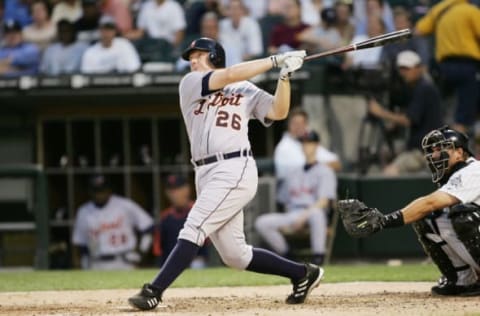
Chris Shelton
If you had asked any Tiger fan which player on the 2006 team would be a big part of Detroit’s future, Chris Shelton might have been the most popular pick. Even over Justin Verlander.
Shelton, sadly, never lived up to those expectations.
The first baseman was drafted in the 33rd round by the Pittsburgh Pirates in the 2001 MLB draft. He raked for three seasons in the minors before the Tigers selected him in the Rule 5 draft. He only played sparingly in 2004, hitting .196 in 46 at-bats.
Shelton broke out in 2005, slashing .299/.360/.510 with 18 home runs and a 132 OPS+. He looked the part of a future star, having crushed professional pitching since 2001.
2006 was no different, as Shelton got off to a blistering start. He hit nine home runs in the teams first 13 games, the fastest American Leaguer to reach that mark in history. The only National League players to repeat that mark are Mike Schmidt, Luis Gonzalez and Larry Walker.
Unfortunately, Shelton’s power all but dissipated after that. By July 31 he was sent down to Triple-A Toledo, having been replaced by veteran Sean Casey whom the Tigers acquired at the trade deadline.
Shelton’s career never got back on track. He spent a lot of time bouncing around in the minor leagues. He only saw 123 more major league at-bats split between the Rangers and Mariners between 2008-2009. Shelton hit .220 with just two home runs before finishing his career out in the Astros minor league system.
Shelton stayed in the game, coaching at his alma mater Cottonwood High School in Salt Lake City. While things did not quite turn out as he had expected when his career started, the 37-year-old is content with his career.

Placido Polanco
Known for his iconic grin around the bases during Magglio Ordonez‘s walk-off in the ALCS, Polanco had a very solid career in the Motor City. In fact, we ranked him as the fourth greatest second basemen in Tiger history just a few weeks ago.
He originally came to the Tigers in a midseason trade back in 2005.
Polanco hit .295/.329/.364 with an 80 OPS+ and a 1.9 bWAR for the 2006 team. He was even better in the playoffs. He hit .412 in the ALDS against the Yankees, with two RBI. Then, he hit .526 against the A’s, scoring two runs including the famous trot around the bases to win game four. He was named ALCS MVP for his performance.
Polanco sadly struggled in the world series, going hitless in 17 at-bats as the Tigers lost to the Cardinals.
He stayed with the team through the 2009 season before signing with the Phillies as a free agent.
Polanco finished his Tigers career with a .311/.355/.418 slash line, 806 hits, two Gold Glove Awards and a 19.1 WAR. He was one of the best defensive second basemen of all-time and certainly ranks as one of the best in Tiger history.
Polanco spent three seasons with the Phillies, hitting a combined .281 with 5.5 bWAR. He played one last season in Miami in 2013, hitting .260 with a 72 OPS+.
Polanco was unsigned during the 2014 season, and announced in March of 2015 that he was “90 percent” retired, but would consider the right situation.
He indicated a desire to coach, but as of this writing he has yet to land a role coaching professional baseball. He also indicated a desire to spend more time with his family when he officially retired in 2016, and it appears he has made true on that.
Polanco will appear on the next Hall of Fame ballot, having been retired the requisite five years. While he was an elite defensive second baseman, he does not seem likely to gain any traction for the Hall of Fame.
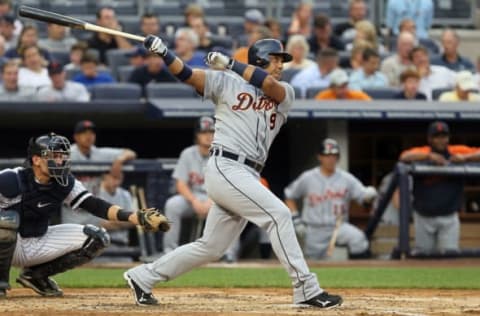
Carlos Guillen
The Tigers acquired Carlos Guillen in one of the best trades in team history. In 2004, they sent minor leaguer Juan Gonzalez and Ramon Santiago to the Mariners in exchange for Guillen.
Santiago came back to the Tigers after only playing in eight games with the Mariners.
Meanwhile, Guillen went onto become one of the better shortstops in team history. He was with the Tigers from 2004-2011, accruing 892 hits and 95 home runs. He slashed .297/.366/.476 with a 121 OPS+ and made three All-Star games.
2006 was Guillen’s finest season in the Motor City. The switch-hitter slashed .320/.400/.519 with 19 home runs and 20 stolen bases. He had a 136 OPS+ and a 6.0 bWAR, finishing 10th in MVP voting.
He was one of the few Tigers who hit well in the World Series, hitting .353 with two RBI.
Guillen went on to play five more seasons with the Tigers, although his last two were spent primarily on the disabled list. He was also moved around the diamond quite a bit, spending time at first base, second base and even left field. He ended up signing a minor league deal with the Mariners in February 2012 but voluntarily retired less than a month later.
Guillen finished his career with 1,331 hits, 124 home runs and a 27.7 bWAR. He is one of the five greatest shortstops in Tiger history and was an instrumental part of Detroit’s World Series run in 2006.
Post-retirement, Guillen has actually taken on the role as GM of the Venezuelan World Baseball Classic team. He oversaw a team littered with Tigers, including Miguel Cabrera and Victor Martinez. The team was even managed by former Tigers first base coach Omar Vizquel, although there was some controversy between the two early on.
Guillen is extremely involved in Venezuelan baseball, also running an academy in his home country. The academy actually produced the Tigers top prospect, Franklin Perez.
Guillen is one of the greatest Venezuelan baseball players of all-time, and he is looking to make his mark on the country last well beyond his playing days.
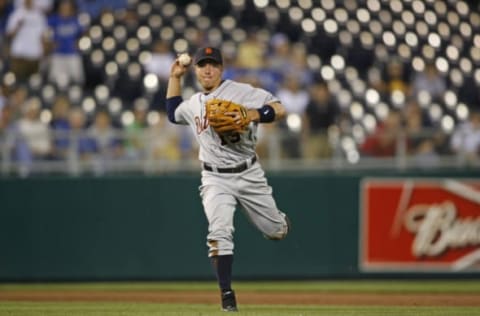
Brandon Inge
Brandon Inge spent 12 seasons in a Tiger uniform, cementing his name all over Detroit’s record books. He is in the top-25 in doubles, home runs, total bases, games played and extra base hits. He is also number four in defensive war, and number one in strikeouts.
The Tigers drafted Inge in the second round of the 1998 draft out of Virginia Commonwealth. He was originally brought up as a catcher and spent three years behind the plate in Detroit. In fact he was the starting catcher on the famous 2003 team that went 43-119. Inge hit .203 with a 63 OPS+ that season.
In 2004 the team converted him to third base full time and his career took off. From 2004-2010 Inge slashed .246/.319/.413 with a 93 OPS+ and 121 home runs. He posted a 19.5 bWAR, or a 2.8 yearly average.
2006 was one of Inge’s best seasons at the plate. He hit .253 with 27 home runs, 83 RBI and a 4.9 bWAR. He struggled in the ALDS against the Yankees but hit .333 with a home run against the A’s and .353 against the Cardinals in the World Series.
Inge remained with the Tigers through 2011, but a dip in performance and unhappiness about his role (he had been shifted to outfield due to Prince Fielder and Miguel Cabrera playing the corners) led him to be cut in April of 2012.
He hit 11 home runs in a half season with the A’s before spending a miserable few months with the Pirates in 2013. He hit .181 before calling it a career.
Overall, Inge finished his career with a .233 average and 152 home runs. His 18.5 bWAR is 35th in Tigers history, right behind fellow infielders Placido Polanco and Carlos Guillen.
Nowadays Inge lives on a 400-acre farm in Lynchburg, Virginia. He put his name in the ring to be the head baseball coach at nearby Liberty University, but was not selected.
The last update on Inge was that he is serving as a guest coach for the Purcellville Cannons of the Collegiate Baseball Club.

Craig Monroe
Craig Monroe’s nine year MLB career was spread out across four different teams. However, he found almost all of his major league success while wearing the Old English D.
Monroe was drafted in the eighth round by the Texas Rangers in 1995. He made his big league debut in 2001 with the Rangers, only hitting .212 in 52 at-bats.
He was selected off waivers by the Tigers before the 2002 season and played sparingly, going 3-for-25.
The powerful right-hander reached his peak over the next four seasons in Detroit. From 2003-2006, Monroe slashed .267/.312/.466 with a 104 OPS+. He averaged 22 home runs and 81 RBI per season.
Monroe, like so many of his teammates, peaked in 2006. He set career highs in doubles (35) home runs (28) RBI (92) and total bases (261).
He caught fire in the postseason, smacking five home runs and driving in nine. He hit two home runs in the World Series, but went 1-for-20 otherwise.
Monroe spent the majority of 2007 with the Tigers before being shipped to the Cubs in August for Clay Rapada. He struggled in the Windy City and was traded after the season to the Twins.
Monroe again struggled in Minnesota and was released before the season ended. He spent the first half of 2009 with the Pirates before being released and calling it a career. He finished with 115 career home runs, 101 of them in a Tigers uniform.
Tiger fans have seen plenty of Monroe in his post playing days. The outfielder joined the broadcast team back in 2012 as a studio analyst. He occasionally provides color commentary as well.
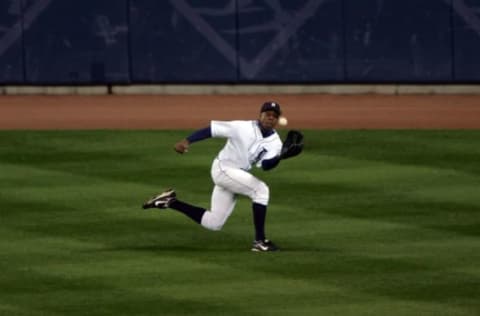
Curtis Granderson
One of just three remaining active players from the 2006 Tigers, Curtis Granderson has put together a very solid MLB career.
Originally drafted by the Tigers back in 2002, Granderson made his big league debut two short seasons later.
He saw limited action in 2004 and 2005, but put together his first full season in 2006. As the everyday centerfielder and leadoff hitter, Granderson slashed .260/.335/.438 with 19 home runs and eight stolen bases. He led the league in strikeouts that year, a trend that has continued to haunt him throughout his career.
He hit well in the playoffs until the World Series rolled around, when he went 2-for-21.
2006 was just the beginning for Granderson, as his 2007 was one for the record books. Granderson stuffed the stat sheet, hitting 38 doubles, 23 triples, 23 home runs and stealing 20 bases. His 20-20-20-20 season puts him in an extremely exclusive club. Granderson also hit .302 and finished 10th in MVP voting that season.
Granderson spent two more years in the Motor City, leading the league in triples with 13 in 2008 and making the All-Star team in 2009, while blasting 30 home runs.
He was traded after the 2009 season to the Yankees in a three team trade that netted the Tigers Phil Coke, Austin Jackson, Daniel Schlereth and Max Scherzer.
Granderson spent the next four seasons as a Yankee, posting back to back 40 home run seasons and winning the 2011 Silver Slugger Award. He was with the Mets from 2014 until midway through last season, when he was traded to the Dodgers.
Granderson reportedly signed a one-year deal with the Toronto Blue Jays to continue his career.

Magglio Ordonez
The lasting image of Detroit’s 2006 season is Magglio Ordonez blasting his iconic walk-off home run to sweep the Oakland A’s and send the Tigers to their first World Series since 1984. In fact, Ordonez’s home run was hit 22 years to the day of the Tigers winning it all in 84.
“Maggs” as he was affectionately known, spent the first eight seasons of his big league career playing for the White Sox. He hit .307 with 187 home runs before the Tigers signed him in 2005 to a five-year, $85 million dollar contract. At the time it was the second largest contract in team history.
Ordonez suffered a sports hernia in 2005 that cost him a good chunk of the season. However, he returned to form in 2006 and hit .298 with 24 home runs and 104 RBI. His playoff heroics aside, Ordonez went limp in the World Series, going 2-for-19.
2007 was the best season of Maggs’ career. He won the batting title with a .363 average, while also leading the league with 54 doubles. He blasted 28 home runs and had 139 RBI while also making the All-Star team and finishing second in MVP voting.
Injuries eventually derailed Ordonez’s career, causing him to retire midway through the 2012 season. He still hit .300 over his last four seasons in Detroit, and finished his Tigers career with a .312 average.
Ordonez reached the Hall of Fame ballot last season and received 0.7% of the vote. While his career was solid, it was not deemed Hall of Fame worthy.
However, Ordonez has been more worried about another ballot since retirement: In 2013 Ordonez ran for office as the Mayor of Sotillo, a Venezuelan city of over 250,000 people. He won the race and is currently serving as their mayor. Ordonez is a member of the United Socialist party of Venezuela and supports current president Nicholas Maduro.

Marcus Thames
Marcus Thames and Craig Monroe had eerily similar careers. Both played for four different teams but spent the vast majority of their career in the Motor city. Both hit exactly 115 career home runs. Monroe hit 101 with the Tigers, while Thames hit 99. Both were left fielders, although Thames spent a fair amount of time at DH while in Detroit.
Thames was originally drafted in the 30th round by the New York Yankees in 1996. He didn’t make his MLB debut until 2002 (same as Monroe) and only earned 13 at-bats.
After the season, Thames was shipped to Texas in exchange for Ruben Sierra. After 73 uninspiring at-bats in Texas, Thames signed with the Detroit Tigers ahead of the 2004 season. He was a part time player for the Tigers between 2004-2005, accruing 272 at-bats and blasting 17 home runs with a 103 OPS+. That earned him a starting role heading into 2006.
Thames served as the Tigers designated hitter for 46 games in 2006, narrowly edging out Dmitri Young for the most appearances on the year. Thames also played a lot of left field, earning 348 total at-bats on the year, a career-high.
That wasn’t the only career-high Thames set, as he blasted 26 home runs, had 60 RBI and posted a 123 OPS+. That season would prove to be the best of Thames’ career. He spent three more seasons in Detroit, hitting .244 with 56 home runs with a 103 OPS+.
After the 2009 season, Thames signed with the New York Yankees. He hit 12 home runs in 212 at-bats. The Dodgers picked him up for 2011, but he only saw 66 at-bats and hit .197. That ended Thames’ playing career.
Thames finished his Tigers career with a home run every 14.8 at-bats, a franchise record.
It didn’t take long for Thames to find his second career, as he started coaching the Class-A Tampa Yankees in 2013 as their hitting coach.
He became the Yankees Double-A hitting coach in 2014, and the Triple-A hitting coach in 2015. From there, he got promoted to assistant hitting coach with the big club, a position he still holds today.
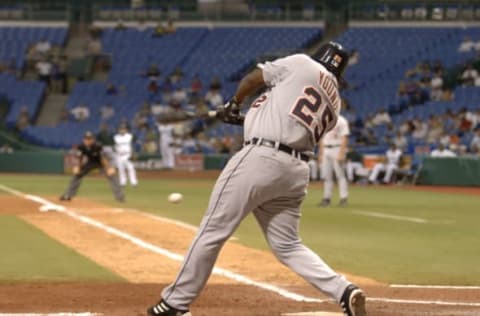
As with any good team, the Tigers got strong performances up and down their lineup in 2006. That included strong play from their bench. There were seven other players who earned over 50 plate appearances for the Tigers in 2006.
Note: Matt Stairs, Brent Clevlen, Jack Hannahan, Kevin Hooper and Mike Rabelo also played for the 2006 Tigers.
Vance Wilson
Wilson was the backup catcher to All-Star Ivan Rodriguez in 2006. He spent the majority of his career with the Mets before playing 2005 and 2006 with the Tigers. He is currently the bullpen coach for the Kansas City Royals.
Sean Casey
The Tigers acquired three time All-Star Sean Casey at the 2006 trade deadline. He replaced Chris Shelton in the lineup and was the starting first baseman during the playoff run, even hitting two home runs against the Cardinals. Casey hit .302 over his 12 year career, spent mostly in Cincinnati. He is currently an MLB Network Analyst, a position he has held since 2014.
Omar Infante
Infante hit .277 with four home runs in 224 at-bats with the Tigers in 2006. He played second base, shortstop, third base and center field, while also spending some time at DH. Named one of Detroit’s 10 greatest second baseman of all-time, Infante played through 2016 in the major leagues. He spent all of 2017 at Triple-A Toledo, hitting .282. It is unclear if he is planning to play again in 2018.
Ramon Santiago
Santiago spent 10 seasons in Detroit, serving almost exclusively as a utility infielder. 2006 was his first season back in Detroit after spending two years in Seattle. He hit .225 in just 80 at-bats as Infante handled the primary utility duties. Santiago played with Detroit through the 2013 season, eventually retiring in 2015. He was recently named the Tigers new first base coach, replacing Omar Vizquel.
Neifi Perez
The Tigers had a lot of utility infielders on their roster in 2006. Perez came over on August 20 of 2006 from the Cubs. He started 14 games at second base in place of an injured Placido Polanco, hitting just .200. He spent 2007 in a bench role with the Tigers before a series of suspensions for amphetamines ended his career. Perez was named to the Caribbean baseball Hall of Fame in 2012, but has not been in the news much since then.
Alexis Gomez
Gomez spent parts of four seasons in the major leagues, split between the Royals and the Tigers. He hit .272 in 103 at-bats for the Tigers in 2006, serving as their fifth outfielder. Gomez was the co-hitting coach of the minor league Orem Owlz in 2015, but does not appear to hold the position currently.
Dmitri Young
Young hit .250 with seven home runs as Detroit’s DH (along with Marcus Thames) in 2006. He battled serious alcohol abuse during the season, and was eventually cut just before the playoffs by the Tigers. Young was an avid baseball card collector, and in 2012 he auctioned off part of his collection for $2.4 million dollars. He used the money to start the Dmitri D. Young foundation, a foundation dedicated to helping underprivileged kids in California.
Now that we have covered the offense, let’s take a look at Detroit’s 2006 rotation and where they are now.

Jeremy Bonderman
Jeremy Bonderman spent 10 seasons in a Tigers uniform. Considered a future ace, Bonderman struggled with injuries and inconsistency, never quite living up to his potential.
Bonderman was originally selected in the first round by the Oakland A’s in the 2001 draft. He was shipped to the Tigers in a blockbuster three team trade that included Carlos Pena, Jeff Weaver and Ted Lilly.
Bonderman debuted during the disastrous 2003 season, starting 28 games and going 6-19 with a 5.56 ERA. He got progressively better in 2004 and 2005, and had his career year in 2006.
That season, Bonderman went 14-8 with a 4.08 ERA (3.29 FIP) and 202 strikeouts.
He was better in the playoffs, making one start in each series and finishing with a 3.10 ERA across 20.1 innings.
Unfortunately, Bonderman’s career never took off from there. From 2007-2010 he threw 427 innings for the Tigers with a 5.17 ERA and a 1.45 WHIP.
He took the 2011 and 2012 seasons off before signing with the Mariners to attempt a comeback. He eventually made the team midseason of 2013, starting seven games and going 1-3 with a 4.93 ERA. The Mariners released him in July and the Tigers picked him back up three days later.
He finished his career throwing 11 games out of Detroit’s bullpen with a 6.48 ERA.
Bonderman lives a quiet life these days in his hometown of Pasco, Washington. He is married with two kids, 11-year-old Mailee and 7-year-old Tripp.
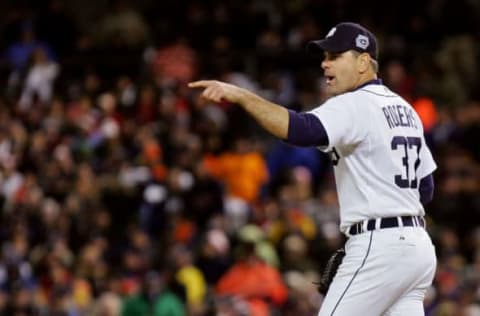
Kenny Rogers
Kenny Rogers had a 20-year MLB career that spanned from 1989-2008. Only three of those seasons were spent in Detroit, but the left-hander left quite an imprint in Detroit’s history.
Originally drafted in the 39th round of the 1982(!) MLB draft, Rogers made his big league debut with the Texas Rangers in 1989. “The Gambler” was a reliever at first, even leading the league in games pitched in 1992. But in 1993 the Rangers brought him into the rotation, where he remained for the rest of his career.
He stayed with the Rangers until 1995. From there he bounced to the Yankees for two years, the A’s for a year and a half, the Mets for half a season, the Rangers again for three years, the Twins for one season, the Rangers again for two years and then the Tigers for the final three. Whew.
For his career he made four All-Star games and won five Gold Glove Awards. He won 219 games and is 94th all time in innings pitched.
Rogers was arguably at his best as a 41-year-old in 2006. That season he went 17-8 with a 3.84 ERA and a 1.26 WHIP. He finished fifth in Cy Young voting and 26th in MVP voting.
His postseason performance is one for the record books, as Rogers started three games and threw 23 scoreless innings. He struck out 19 and only gave up nine total hits.
Rogers suffered through two more injury-riddled seasons before ending his career after the 2008 season.
Rogers joined the Tigers as a spring training instructor in 2013.
In 2014, he was on the Hall of Fame ballot, garnering 0.2% of votes.
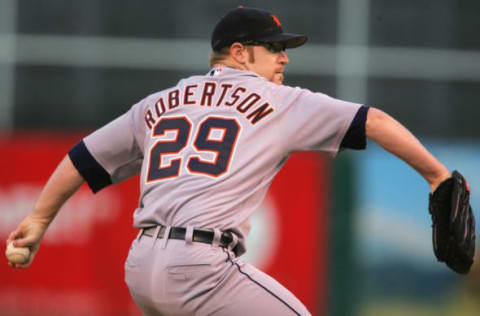
Nate Robertson
Nate Robertson spent the majority of his major league career watching the ball leave the yard. He gave up 160 home runs across his nine big league seasons, an average of 27 per season.
While his results were never great, Robertson epitomizes the “innings-eater” moniker, making 28 or more starts five seasons in a row for Detroit.
Robertson was originally drafted in the fifth round by the Florida Marlins in 1999. He was traded to the Detroit Tigers before the 2003 season. He made his team debut later that year, starting eight games down the stretch and pitching to a 5.44 ERA.
From 2004-2008 Robertson averaged 190 innings per year. He had an ugly 4.81 ERA and and 1.43 WHIP however, and surrendered 135 home runs.
His best season in that window was (surprise!) 2006, when Robertson went 13-13 with a 3.84 ERA and a 118 ERA+.
He also made three starts in the playoffs, going 1-2 with a 5.17 ERA. His first start was a 5.0 inning, seven run disaster against the Yankees. He threw five shutout innings against the A’s and five innings with just two runs against the Cardinals in the World Series.
Robertson was sent back to the Marlins in March of 2010 and bounced around the minor leagues for the next four seasons. He made 21 more big league appearances in 2010 but never reached the big leagues again after that.
Robertson is currently the President and part-owner of the Wichita Wingnuts, an Independent League baseball team in Kansas. In addition, he is also the pitching coach at his alma mater Maize High School.
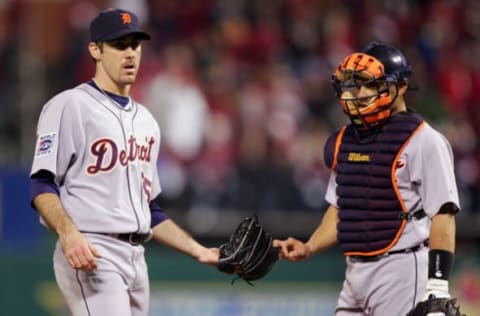
Justin Verlander
Before we continue, take a look at how skinny Justin Verlander was back in 2006. Despite the lankiness, Verlander went 17-9 with a 3.63 ERA and a 125 ERA+ in his rookie season. Despite just being two years removed from Old Dominion University, Verlander was the Rookie of the Year and finished 7th in Cy Young voting.
While he was not great in the playoffs, everyone knew the future was bright for Verlander. Few, however, could have predicted how successful JV would actually become.
Editor’s note: These next few paragraphs could sting if you are still having Verlander withdrawals.
A strong 2007 and a pedestrian 2008 led Verlander into his age-26 season in 2009. That’s when he really got going.
From 2009-2013, Verlander went 91-43 with a 3.05 ERA (2.99 FIP) with a 1.12 WHIP. He had a 9.2 K/9 and averaged 239 strikeouts per season. He was an All-Star every season and finished first, second and third in Cy Young voting.
Of course, there was 2011. That season will forever stand alone as one of the greatest modern pitching seasons in the MLB. Verlander went 24-5 with a 2.40 ERA and 250 strikeouts. He led the league in wins, winning percentage, ERA, games started, innings pitched, strikeouts, ERA+, WHIP and H/9. He was the Cy Young winner and the AL MVP.
Verlander remained with the Tigers through August of 2017, when he was traded to the Houston Astros for prospects Franklin Perez, Daz Cameron and Jake Rogers.
Shortly thereafter, Verlander won his first World Series ring. He is under contract through 2020. At age 34, he should be able to pitch for five or so more seasons before retiring.
Expect to see him in the Hall of Fame someday, and rest assured he will be sporting the Old English D on his hat.

Zach Miner
Zach Miner made his big-league debut in 2006. He was thrust into a starting role after an early season injury to Mike Maroth. He made 27 total appearances on the season, including 16 starts. His 4.84 ERA relegated him to the bullpen later in the year and in the playoffs.
Miner transitioned to the bullpen in 2007, throwing 53.2 innings with a career-best 3.02 ERA. He split between the bullpen and the rotation again in 2008, making 45 total appearances including 13 starts. He had a respectable 4.27 ERA and 104 ERA+. However, his 4.7 K/9 was ugly – especially for someone primarily coming out of the bullpen.
He went 7-5 with a 4.29 ERA in 92.1 innings in 2009 before becoming a free agent. After spending three seasons toiling in the minor leagues, Miner returned to the big leagues in 2013 with the Philadelphia Phillies.
He retired after that season, finishing with a 4.25 ERA in 385.1 innings.
Miner completely switched careers and is now a financial consultant with Fidelity Investments. He did an interview with Jupiter Magazine and recalled this story about his first big league game:
Our manager, Jim Leyland, pulled me aside earlier that morning to ask if I had family coming and to tell me to remind them it was an early 1:05 p.m. start time. He said, ‘Make sure they show up on time, because if they arrive at 1:10, I may have already yanked you out of the game.
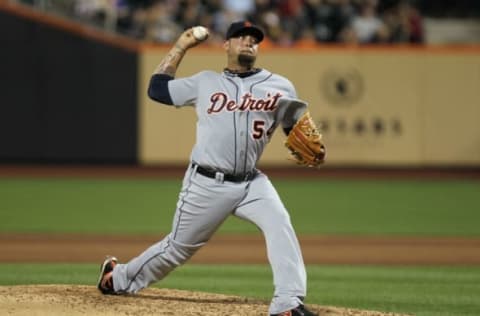
The Bullpen
Perhaps the most surprising thing about Detroit’s run in 2006 was how strong their bullpen was. Long a source of trouble for the Tigers, the 2006 pen was one of their best in team history. The Tigers had 13 players who threw over 30 innings on the year, including the five starters. The remaining eight are listed below.
Note: Six other pitchers threw less than 30 innings for Detroit in 2006: Bobby Seay, Jordan Tata, Chris Spurling, Andrew Miller (yes that Andrew Miller) Chad Durbin and Colby Lewis.
Joel Zumaya
Zumaya was hailed as the closer of the future after his dominating 2006 season. He threw 83.1 innings with a 1.94 ERA and a 10.5 K/9. Injuries cost Zumaya dearly, as he was out of baseball by age 25. Even though he is just 32, Zumaya has been out of baseball for nearly seven years now. He lives in San Diego now and is a fisherman.
Fernando Rodney
The last of the four active players remaining from the 2006 team, Rodney just signed a one-year, $4.5 million contract with the Minnesota Twins. Going into his age-41 season, Rodney has been a workhorse throughout his career. The three-time All-Star will look to add to his 300 career saves next season in Minnesota.
Todd Jones
Jones served as Detroit’s closer in 2006, racking up 37 saves. He ended his career as Detroit’s all-time leader in saves with 235. Jones currently works as an adviser to his local high school and middle school baseball teams. He occasionally appears on Tiger broadcasts as a color analyst as well.
Jason Grilli
Grilli threw 40 innings in the big leagues last year between the Blue Jays and the Rangers. At age 40 and with a 6.30 ERA, it is hard to imagine Grilli getting another chance in a big league bullpen. If this is the end of the line, Grilli will finish with a 4.22 ERA and 79 saves across 595 games pitched.
Wil Ledezma
Ledezma’s best season was in 2006, when he went 3-3 with a 3.58 ERA in 60.1 innings. He was the winning pitcher in Game 4 of the ALCS against Oakland. Ledezma bounced around the major and minor leagues, last pitching in the show in 2014. The 36-year-old currently pitches in Mexico, recording a 3.62 ERA across 62 innings for two different teams in 2017.
Mike Maroth
Remember Mike Maroth? The left-hander started 2006 off strong before surgery interrupted his year. He finished with a 4.81 ERA in 143 career starts in a Tigers uniform. Maroth served as a minor league pitching coach for the Tigers for four seasons. In 2015 he was hired by the Atlanta Braves to be their minor league rehab pitching coordinator, a position he still holds today.
Jamie Walker
Walker was a true LOOGY, tossing 270 innings in a Tigers uniform across five seasons. He had a 3.33 ERA and a 131 ERA+. He currently lives out on a ranch in Smith Park, Kansas with his wife and four children.
Roman Colon
Colon appeared in 20 games for the Tigers in 2006, pitching to a 4.89 ERA. He bounced around the majors and minors until he was released for good by the Royals in 2015. He now lives in the Dominican Republic with his wife Monica.
Next: Top 10 Second Baseman in Tiger History
2006 was one of those unforgettable seasons in Tiger history. Coming off the heels of a disastrous 2003 season, fans can only hope that their current rebuild will be as short and as sweet as the last one.